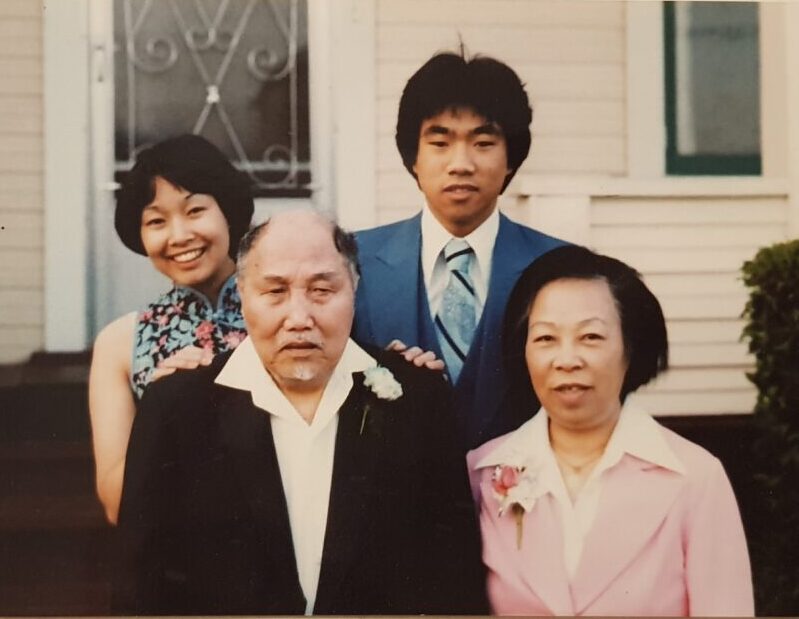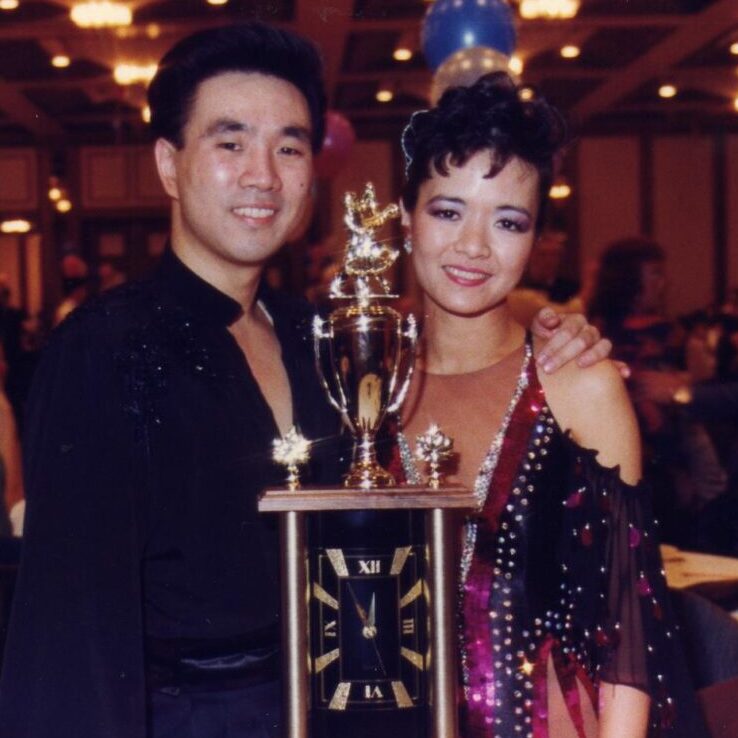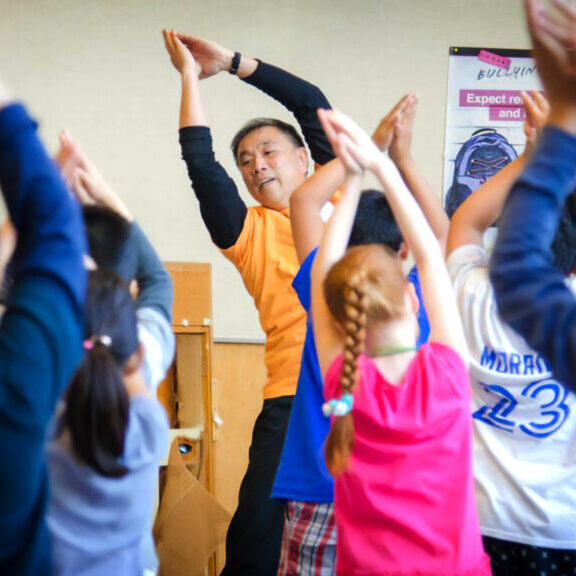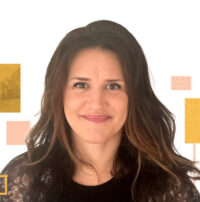Why We Give: Tim Mah
May 21, 2024
9 min read
Take it from Tim. If you want to make a difference, find what makes your heart do the cha-cha and follow its lead.
Surrounded by an array of motivational posters and inspirational quotes in his Vancouver home office, Tim Mah introduces himself with a burst of enthusiasm that sets the tone for the conversation ahead. Tim dances to a rhythm that is uniquely his own. He’s a proud son of hardworking Chinese immigrants, a dance educator to underprivileged kids in his community, and about as passionate and genuine as they come.
Since creating his DARE-2-Danzkool Giving Group in 2014, Tim has raised over $75,000 to fund his DARE-2-Dance-Your-Brain program, positively impacting 900+ students. His goal for 2024 is to raise $25,000 and extend the program’s reach. In an inspiring sit-down, Tim tells us about the impact of his mother’s generosity, leaving his engineering career behind, and why he believes the key to making a meaningful impact is finding the thing that stirs your soul and running with it.
Was giving back part of your upbringing?

I come from a poor immigrant family. My mother and father were very old by the time I was born and never really got a break in life, so they were always working in service jobs.
When I think back to my youth, I remember when I was about to start high school, and the school was reaching out to families to ask if their child would like to participate in the high school band. That evening, I listened to a discussion between my mother and my sister and heard, “We can’t afford to send Tim to this band program and afford the rice for next month.” That conversation still resonates.
And yet, my mother would go out and do charity work for the local Chinese United Church she belonged to. I would tag along to sell tickets to the “Chowmein Tea” to raise funds for immigrant families who were arriving in Canada and didn’t have anywhere to go.
We’d walk around the streets of Nanaimo and meet all sorts of people, but we wouldn’t meet a lot of people who were worse off than we were. I grew to appreciate that people who are not well off will still find it in themselves to help others who are less fortunate. I guess that always stuck with me.
Have you always been a dance educator?

My wife and I met through dancing while we were attending the University of British Columbia, where I was studying mechanical engineering. After graduation, we moved to Ottawa to start our careers and pursue our dancing. She worked as a researcher at the University of Ottawa while I worked as an engineer in the defence industry.
I’m a reasonably bright guy, and I have all the qualifications to make a good engineer, but something was missing in my work and in life. I was unfulfilled and risked falling head-first into a mid-life crisis. Luckily, dancing helped me stay focused and sane.
10 years into my engineering career, my wife and I retired from competitive dancing, and a friend asked me to come down to the high school to teach dancing to her grades 8-10 phys ed classes. So, I did. When I went back to the office, I found my mind constantly going back. How could I have taught that lesson better? What about that shy kid over in the corner? How could I have better connected with them?
I started to weigh the two things and noticed how invigorated and energized I felt while facing a gym filled with students. I was calm yet fully engaged — in mind, heart and spirit — to solve their learning challenges while sharing something I love. In contrast, when I got back to my engineering desk, the work seemed dull and lifeless, like dry toast. I could do it, but it was tasteless. For the sake of my health and well-being, I gave up the office job and took up dance education full-time.
Who inspires you?
My favourite principal, who I’ve known for many years now, requested to be transferred from her small, well-funded school in Vancouver to a much larger elementary school in a rough area of the city. When I asked her why, she said, “I only have so much time in life to make a difference. I just felt this school could use my help”. She really cares.
She asked me to raise the funds to bring my program to her school, and one classroom in particular really tested my patience. I couldn’t get half the class to settle down enough to allow the other half to learn something in a structured setting, and I would get frustrated. The program is a sequence of 12 progressive lessons, and typically at the end, the kids present what they’ve learned to an audience.
So, the final day came, and they got through their presentation, but only barely. Afterwards, she says, “Come see me next week when you come and tidy up.” So, I got called to the principal’s office. She sat me down and said, “That class that I had you work with was difficult, wasn’t it? Let me tell you why I wanted you to work with them.
”This child is in his eighth foster home. He’s never had a steady home life and is understandably removed and inaccessible in the classroom. That girl who didn’t want to participate and fought you every step of the way? She doesn’t know her father and her mother is a drug addict. She is living with her grandmother and sees her mother maybe once a month.”
“And yet, on the day of the performance, they got the nerve to voluntarily participate with their classmates. To me, that was a huge win. Whereas for you, Tim, it felt like a failure because you couldn’t get these kids to perform to what you expected.”
She was trying to tell me that the value of the program has nothing to do with the presentation and everything to do with the process. That was a huge learning experience for me.
How did DARE-2-Danzkool get started?

My wife works with academics so she takes me out to seminars now and again, and one particular seminar was serendipitous. It was there that Adele Diamond approached me and introduced herself. She was researching how involving arts education in typical traditional classroom education can help to better develop children’s Executive Functions.
So she says, go to New York to get trained in this program at the National Dance Institute. I flew to New York, and through my training, I discovered that learning to dance can engage and train the brain in the same way that sitting and reading. For a child who has problems sitting still, moving to music can really help them develop their learning faculties, and in that way, that child stands a better chance back in school to develop the learning skills that they need to succeed.
What advice do you have for people who are new to fundraising?
I think the key to succeeding at raising funds for your cause comes down to identifying where there are individuals who share your same concern. I found them in the education and arts communities.
By turning arts educators and school teachers, I was able to expand my reach into a community where I might not know people, but we share the common belief that there is value in this cause. Then it becomes my job to persuade them to donate.
Why do you choose to do what you do?
My journey through life has shown me that it’s very important to be genuine to yourself. What I care about is reaching out to help others, but you can help all sorts of people in all sorts of ways. You can give to missions in third-world countries, you can give to cancer campaigns, you can give to all sorts of places.
My encouragement is that if you want to give, give. But if you want to give where it really counts, find what it is that resonates in your soul and in your heart and apply yourself to that cause. Giving doesn’t just come down to money. Money is just a measure of wealth. The true measure of your soul is what resonates and makes you better and makes everyone around you better.

